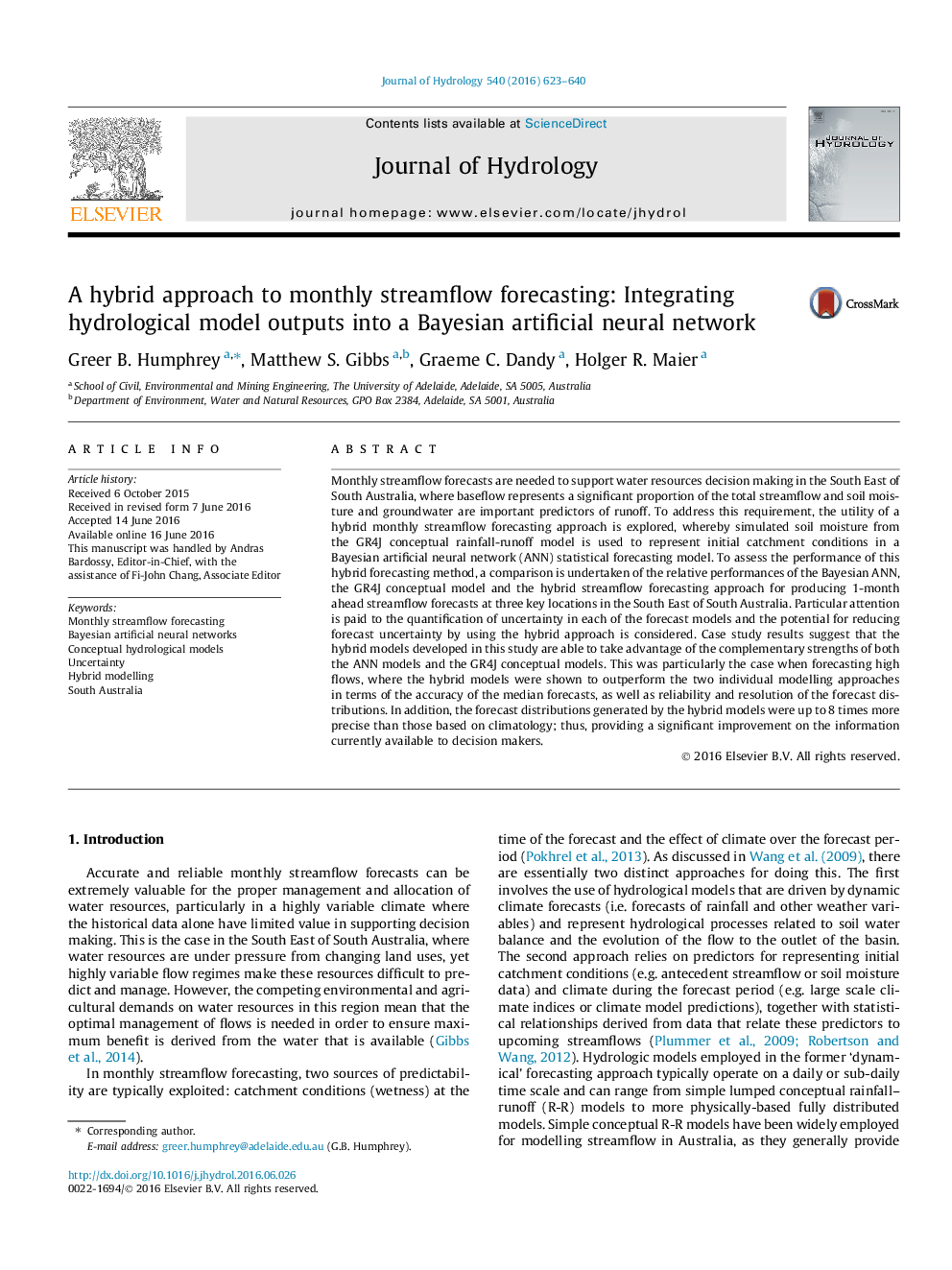| Article ID | Journal | Published Year | Pages | File Type |
|---|---|---|---|---|
| 6409560 | Journal of Hydrology | 2016 | 18 Pages |
â¢A hybrid monthly streamflow forecasting approach is presented.â¢Simulated soil moisture from a conceptual model is incorporated into ANNs.â¢Uncertainty is estimated using a formal Bayesian approach.â¢Forecast performance is evaluated using a real Australian case study.â¢The hybrid model improves forecast accuracy compared to reference models.
Monthly streamflow forecasts are needed to support water resources decision making in the South East of South Australia, where baseflow represents a significant proportion of the total streamflow and soil moisture and groundwater are important predictors of runoff. To address this requirement, the utility of a hybrid monthly streamflow forecasting approach is explored, whereby simulated soil moisture from the GR4J conceptual rainfall-runoff model is used to represent initial catchment conditions in a Bayesian artificial neural network (ANN) statistical forecasting model. To assess the performance of this hybrid forecasting method, a comparison is undertaken of the relative performances of the Bayesian ANN, the GR4J conceptual model and the hybrid streamflow forecasting approach for producing 1-month ahead streamflow forecasts at three key locations in the South East of South Australia. Particular attention is paid to the quantification of uncertainty in each of the forecast models and the potential for reducing forecast uncertainty by using the hybrid approach is considered. Case study results suggest that the hybrid models developed in this study are able to take advantage of the complementary strengths of both the ANN models and the GR4J conceptual models. This was particularly the case when forecasting high flows, where the hybrid models were shown to outperform the two individual modelling approaches in terms of the accuracy of the median forecasts, as well as reliability and resolution of the forecast distributions. In addition, the forecast distributions generated by the hybrid models were up to 8 times more precise than those based on climatology; thus, providing a significant improvement on the information currently available to decision makers.
